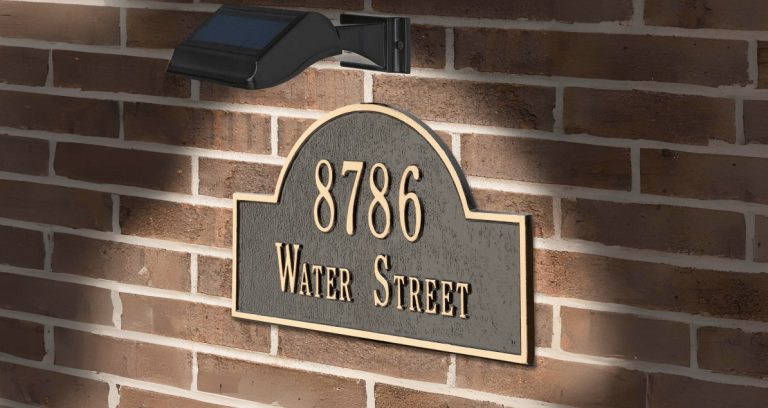Home improvements can be an exciting way to breathe new life into your living space, whether you’re renovating a single room or planning a full-scale extension. However, the financial strain that often comes with home improvement projects can be daunting. The key to success lies in striking a balance between your aspirations for your home and your financial limitations. With the right planning, creativity, and a strategic approach, you can make meaningful improvements to your home without breaking the bank. In this article, we will explore how you can improve your home on a budget, with a focus on extending your living space in ways that are both affordable and effective.
1. Start with a Clear Plan and Set a Realistic Budget
The first step in any home improvement or extension project is establishing a clear vision and budget. The last thing you want is to find yourself in the middle of a project with unforeseen expenses. Begin by outlining the changes you want to make. Are you looking to expand your home with an additional room or simply update your existing space? Understand what is most important to you—whether it’s extra space, better functionality, or aesthetic improvements.
Once your vision is clear, set a realistic budget. It’s essential to factor in every aspect of the project, including materials, labor, permits, and potential unforeseen costs. For a home extension, costs can vary greatly depending on the scale of the project and the area you live in. To avoid overspending, leave a small buffer—around 10-15%—for unexpected expenses. Having a detailed plan will not only help you stick to your budget but also ensure you get the best value from every dollar spent.
2. Consider DIY Where Appropriate
When it comes to home improvement, doing things yourself (DIY) is a powerful way to keep costs down. While larger projects, such as structural extensions, require professional help, smaller tasks like painting, installing new fixtures, or tiling a backsplash can often be done without hiring contractors.
For example, if you’re planning an extension that involves adding a new room or expanding a living area, you may not be able to do the entire job yourself, but you can take on tasks such as demolition, landscaping, or interior painting. Additionally, installing shelving, building furniture, or even refurbishing existing furniture are great ways to add character and functionality without the hefty price tag of buying new.
There are plenty of online resources, from instructional videos to community workshops, that can help guide your DIY efforts. However, be mindful of your abilities—if a task requires specialized knowledge, such as electrical work or plumbing, it’s better to hire a professional to avoid costly mistakes.
3. Extend Your Home with Prefabricated or Modular Units
When it comes to home extensions, building from scratch can be expensive, time-consuming, and disruptive. An excellent alternative is to look into prefabricated or modular extensions. These are pre-built sections of a home that can be transported and added to your property. Not only does this approach reduce construction time, but it can also lower labor costs, as the majority of the work is done offsite.
These modular units come in various designs, from simple room extensions to more elaborate units that include plumbing, electrical wiring, and heating systems. In addition to their cost-effectiveness, modular extensions are a great solution if you’re working with limited space, as they can be designed to suit your specific needs. Furthermore, they are often energy-efficient and built with sustainable materials, adding long-term value to your home.
4. Repurpose Existing Spaces
Rather than adding new square footage to your home, consider repurposing underutilized areas within your existing space. Basements, attics, and garages are often overlooked but can offer significant potential for expansion. Transforming these areas into functional living spaces can be a cost-effective way to increase your home’s usable square footage.
For instance, an attic could be turned into a cozy bedroom or office, while a basement could become a home theater or guest suite. Many of these spaces already have the basic infrastructure in place, such as electrical wiring and plumbing, so transforming them is often a more budget-friendly alternative to building a full extension.
Additionally, converting a garage into a living space or even just an extra bathroom or laundry room can have a significant impact on your home’s value without the need for a full-scale extension. You might need to invest in insulation, windows, and flooring, but the overall cost will be considerably less than that of a traditional addition.
5. Use Cost-Effective Materials
One of the most significant costs of any home extension or renovation is materials. However, there are many ways to save money while still achieving a beautiful, high-quality finish. Consider using alternative materials or opting for lower-cost versions of high-end materials. For example, engineered wood or laminate flooring can mimic the look of hardwood at a fraction of the cost. Similarly, concrete countertops can provide the same sleek, modern aesthetic as granite or marble, but at a more affordable price.
For walls, consider using drywall or plywood instead of more expensive paneling or finishes. In terms of furniture, opting for refurbished or secondhand pieces can add character to a room without the high cost of buying new items. Thrift stores, flea markets, and online platforms like Facebook Marketplace or Craigslist are excellent places to find high-quality furniture for a fraction of the retail price.
Additionally, if you’re working on an extension, sourcing materials locally can help cut down on shipping costs. By researching budget-friendly alternatives and shopping smartly, you can still achieve a polished look without overspending on materials.
6. Plan for Energy Efficiency
While energy-efficient upgrades may require an upfront investment, they will pay off in the long run by lowering your utility bills and reducing your home’s environmental impact. When remodeling or extending your home, consider installing energy-efficient windows, insulation, and appliances. Double-glazed windows, for example, can significantly improve heat retention, reducing heating and cooling costs.
In addition to energy-efficient windows, installing energy-saving lighting fixtures, such as LED bulbs, and using programmable thermostats can further reduce energy consumption. If your extension involves any new electrical work, ensure that the wiring and outlets are designed with energy efficiency in mind. This can reduce future costs and increase the overall value of your home.
7. Negotiate and Compare Contractors
When your project requires professional help, such as for plumbing, electrical work, or structural changes, it’s essential to shop around and compare quotes from several contractors. Don’t be afraid to negotiate prices—many contractors are willing to adjust their fees, especially if you’re flexible on timing or materials. Always check the contractor’s references, review their past projects, and ensure they are licensed and insured to avoid potential problems down the road.
Sometimes, hiring a less-experienced contractor might seem like an opportunity to save money, but it’s often worth investing in a more experienced professional to avoid mistakes that could end up costing you more in repairs later.
8. DIY Landscaping to Complement Your Extension
When extending your home, the outdoor space is just as important as the indoor. Landscaping is one of the most affordable ways to improve the curb appeal of your property, and it can complement your new extension beautifully. Planting trees, bushes, and flowers that thrive in your climate will not only enhance the aesthetics of your property but can also provide privacy and shade.
Consider creating a functional outdoor area with a deck or patio for dining and relaxation. Adding inexpensive outdoor furniture or building your own can enhance your home’s usable space without high costs. Landscaping doesn’t have to be an expensive endeavor; with a bit of creativity and effort, you can make your extended home feel like a true sanctuary.
Conclusion
Home improvements, especially extensions, can be transformative, allowing you to create a more spacious and functional living environment. However, staying within budget requires careful planning, strategic thinking, and a willingness to get creative. By considering DIY options, repurposing existing spaces, choosing cost-effective materials, and prioritizing energy efficiency, you can significantly improve your home without overspending. Whether you’re adding a small extension or revamping your entire space, these approaches will help you achieve your dream home while staying financially responsible. Ultimately, the key to a successful home improvement project lies in balancing your vision with your budget and making smart decisions that will benefit both your lifestyle and your wallet.















